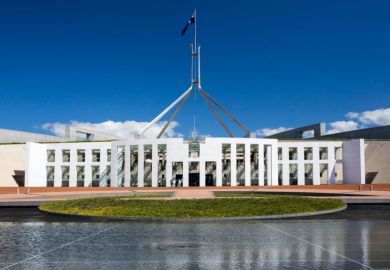A sense of aimlessness permeates the Australian higher education landscape. It’s been building for some time, but reached peak ennui after the failure of the Coalition conservative government to persuade a cantankerous Senate to accept its most recent agenda for legislative change.
Its rejection has left the Coalition without a tertiary education policy to take to the next federal election, which is only nine to 18 months away. Whether it has the time or the motivation to head back to the drawing board is open to debate. Higher education has never been a vote winner among the Australian electorate.
We also know little of what the opposition Labor Party has up its sleeve, although deputy leader and education spokesperson Tanya Plibersek has flagged that she will focus at least some of her efforts on addressing the issues affecting the beleaguered public training sector, known locally as TAFE (Technical and Further Education).
In the most recent knockback of the government’s “reform” agenda – which comprised funding cuts, student fee hikes and more onerous loan repayment schedules – the independent senator Nick Xenophon and his team called for a comprehensive review of the post-secondary education landscape.
Déjà vu? Senator Xenophon was also instrumental in killing off the government’s previous round of reforms in 2015 – which included the wildly experimental and untested idea to deregulate tuition fees to offset a colossal 20 per cent funding cut. Then, as now, the senator demanded a review of tertiary education before he would give full consideration to reform of the sector.
Senator Xenophon didn’t get his review then and he’s unlikely to get it now. After all, the Coalition government has conducted 27 reviews, inquiries, options and discussion papers into the higher education and research sectors since it came to power in 2013. Few have had traction or consequences. Meanwhile, there were precisely none into the skills and training sector, with the lone exception of how to rein in an out-of-control vocational student loans scheme that was in the process of sending the country into bankruptcy.
Australia should take a leaf out of the UK’s book. And fast.
We need not only to understand the current issues, problems and roadblocks, particularly in relation to skills and vocational education, we need to be clear-sighted about where we are heading as a country. How can our universities and technical colleges equip their students and graduates to negotiate the new world order while helping to tackle crippling systemic issues such as intergenerational poverty and widespread digital disruption?
Obviously big problems don’t come with simple solutions. But, without wanting to sound too glib, education is widely accepted to be one of the pivotal policy levers government can pull to redress disadvantage while capturing opportunities to transform digital and structural disruption in our economies.
Over the years, Australia and the UK have tended to mirror each other in tertiary education reforms. From the creation of polytechnics and colleges of advanced education then merging them into comprehensive universities, to the introduction of income-contingent loans and the adoption of expansionist participation targets, to the creation of research quality assessment exercises, the two countries have danced a merry tango on higher education policy.
Now the UK is clearly taking the lead with its Post-16 Skills Plan. Back in Australia, the conversation is only just beginning after Jennifer Westacott, chief executive of the Business Council of Australia, gave the issue some prominence during a National Press Club speech a few weeks ago.
“Once and for all we need to fix this cultural bias, reinforced by a funding bias, that a vocational qualification is a second-class qualification to a university one. It isn't," Ms Westacott said.
The BCA suggested one reform might be a “lifelong skills account” for people to spend on university or technical education across the arc of their working life. The BCA isn’t rusted on to this idea; it just wants a national debate on how the country’s A$20bn bill for post-secondary education might be more productively spent.
Certainly, Britain is forging new ground. Degree apprenticeships are one such bold innovation that Australia should take a long, hard look at. We also need to consider seriously the UK plan to build institutes of technology in every major city – not so much for the buildings but for the types of education that take place in them.
Polytechnics, teaching-only universities, colleges of advanced education, institutes of technology, revitalised TAFEs – it doesn’t matter what they are called, but that they are responsive to local industry needs while providing pathways into undergraduate and postgraduate degrees.
In pulling the pin on the government’s most recent higher education changes, Senator Xenophon said: “We have too many highly qualified young people with PhD degrees stacking supermarket shelves or making lattes. We need to do better than this.”
He’s right. Australian policymakers should be lining up to assess the British model and how it can be adapted for Australia.
Julie Hare is associate director at KPMG in Canberra, and former higher education editor at The Australian. Stephen Parker is national sector leader for education at KPMG in Canberra, and former vice-chancellor and president of the University of Canberra.
Register to continue
Why register?
- Registration is free and only takes a moment
- Once registered, you can read 3 articles a month
- Sign up for our newsletter
Subscribe
Or subscribe for unlimited access to:
- Unlimited access to news, views, insights & reviews
- Digital editions
- Digital access to THE’s university and college rankings analysis
Already registered or a current subscriber?







